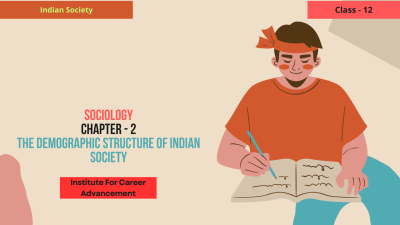Change and Development in Industrial Society - Class 12
Change and Development in Industrial Society is a crucial chapter in Class 12 Sociology, exploring the profound transformations that occur as societies transition from agrarian economies to industrial ones. Key themes and concepts include: Industrialization: The shift from agricultural-based economies to ones reliant on manufacturing and industry, driven by technological advancements and economic factors. Urbanization: The growth of cities as people migrate from rural areas in search of work and opportunities, leading to significant changes in social structures and relationships. Social Stratification: The emergence of new social classes, such as the industrial working class and the capitalist class, often accompanied by increased inequality and social tensions. Economic Changes: The transition from a subsistence economy to a market-based economy, characterized by specialization, division of labor, and a focus on efficiency and productivity. Cultural Shifts: Changes in values, beliefs, and behaviors as societies adapt to the demands of industrialization, including the rise of consumerism, individualism, and secularism. Social Institutions: The transformation of traditional institutions like family, education, and religion to meet the needs of an industrial society. Global Connections: The increasing interconnectedness of societies through trade, migration, and communication, leading to both opportunities and challenges. By studying this chapter, students gain a deeper understanding of the historical and contemporary forces shaping societies worldwide, as well as the social and economic implications of industrialization. শিল্প সমাজে পরিবর্তন ও উন্নয়ন দ্বাদশ শ্রেণির সমাজবিজ্ঞানের একটি গুরুত্বপূর্ণ অধ্যায়, যা কৃষি অর্থনীতি থেকে শিল্প অর্থনীতিতে রূপান্তরিত হওয়ার সাথে সাথে ঘটে যাওয়া গভীর রূপান্তরগুলি অন্বেষণ করে। মূল বিষয় এবং ধারণাগুলির মধ্যে রয়েছেঃ শিল্পায়নঃ প্রযুক্তিগত অগ্রগতি এবং অর্থনৈতিক কারণগুলির দ্বারা চালিত কৃষি-ভিত্তিক অর্থনীতি থেকে উৎপাদন ও শিল্পের উপর নির্ভরশীল অর্থনীতিতে পরিবর্তন। নগরায়নঃ মানুষ কাজ এবং সুযোগের সন্ধানে গ্রামীণ অঞ্চল থেকে স্থানান্তরিত হওয়ার সাথে সাথে শহরগুলির বৃদ্ধি, সামাজিক কাঠামো এবং সম্পর্কের ক্ষেত্রে উল্লেখযোগ্য পরিবর্তনের দিকে পরিচালিত করে। সামাজিক শ্রেণীবিন্যাসঃ শিল্প শ্রমিক শ্রেণী এবং পুঁজিবাদী শ্রেণীর মতো নতুন সামাজিক শ্রেণীর উত্থান, প্রায়শই ক্রমবর্ধমান বৈষম্য এবং সামাজিক উত্তেজনার সাথে থাকে। অর্থনৈতিক পরিবর্তনঃ জীবিকা নির্বাহ অর্থনীতি থেকে বাজার-ভিত্তিক অর্থনীতিতে রূপান্তর, বিশেষীকরণ, শ্রম বিভাজন এবং দক্ষতা ও উত্পাদনশীলতার উপর দৃষ্টি নিবদ্ধ করে। সাংস্কৃতিক পরিবর্তনঃ সমাজ যখন ভোগবাদ, ব্যক্তিবাদ এবং ধর্মনিরপেক্ষতার উত্থান সহ শিল্পায়নের চাহিদার সাথে খাপ খাইয়ে নেয় তখন মূল্যবোধ, বিশ্বাস এবং আচরণের পরিবর্তন ঘটে। সামাজিক প্রতিষ্ঠানঃ একটি শিল্প সমাজের চাহিদা মেটাতে পরিবার, শিক্ষা এবং ধর্মের মতো ঐতিহ্যবাহী প্রতিষ্ঠানের রূপান্তর। বৈশ্বিক সংযোগঃ বাণিজ্য, অভিবাসন এবং যোগাযোগের মাধ্যমে সমাজের ক্রমবর্ধমান আন্তঃসংযোগ, যা সুযোগ এবং চ্যালেঞ্জ উভয়ের দিকেই পরিচালিত করে। এই অধ্যায়টি অধ্যয়নের মাধ্যমে শিক্ষার্থীরা বিশ্বব্যাপী সমাজকে রূপদানকারী ঐতিহাসিক ও সমসাময়িক শক্তিগুলির পাশাপাশি শিল্পায়নের সামাজিক ও অর্থনৈতিক প্রভাবগুলি সম্পর্কে গভীর ধারণা অর্জন করে।
English
Last updated
Wed, 27-Nov-2024



















